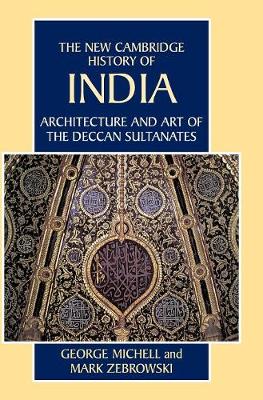The New Cambridge History of India
2 total works
George Michell provides a pioneering and richly illustrated introduction to the architecture, sculpture and painting of southern India under the Vijayanagara empire and the states that succeeded it. This period, encompassing some four hundred years, from the fourteenth to the eighteenth centuries, was endowed with an abundance of religious and royal monuments which remain as testimonies to the history and ideology behind their evolution. The author evaluates the legacy of this artistic heritage, describing and illustrating buildings, sculptures and paintings that have never been published on before. In a previously neglected area of art history, he presents an original and much-needed reassessment.
Architecture and Art of the Deccan Sultanates
by George Michell and Mark Zebrowski
Published 10 June 1999
The Muslim kingdoms of the Deccan plateau flourished from the fourteenth to eighteenth centuries. During this period, the Deccan sultans built palaces, mosques and tombs, and patronised artists who produced paintings and decorative objects. Many of these buildings and works of art still survive as testimony to the sophisticated techniques of their craftsmen. This volume is the first to offer an overall survey of these architectural and artistic traditions and to place them within their historical context. The links which existed between the Deccan and the Middle East, for example, are discernible in Deccani architecture and paintings, and a remarkable collection of photographs, many of which have never been published before, testify to these influences. The book will be a source of inspiration to all those interested in the rich and diverse culture of India, as well as to those concerned with the artistic heritage of the Middle East.

